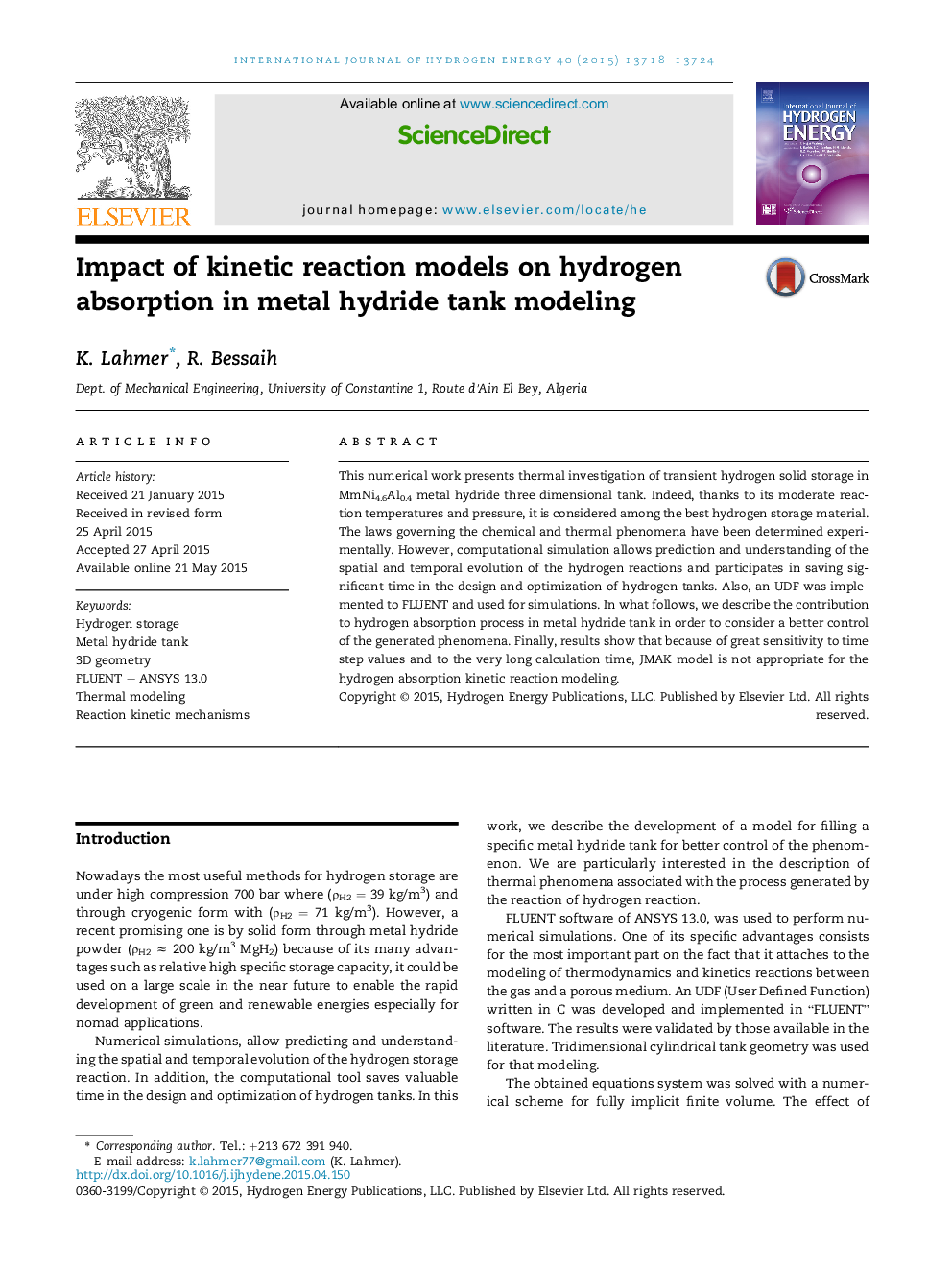| Article ID | Journal | Published Year | Pages | File Type |
|---|---|---|---|---|
| 1274664 | International Journal of Hydrogen Energy | 2015 | 7 Pages |
•Each model of reaction kinetics affects individually the absorption modeling results.•Because of their sensitivity to (Δt), JMAK models are not appropriate for modeling.•Generated temperature gradients during absorption are a common denominator for models.•Too much computational time had been registered with JMAK models.•In order to avoid modeling error, careful choice of the adequate model must be made.
This numerical work presents thermal investigation of transient hydrogen solid storage in MmNi4.6Al0.4 metal hydride three dimensional tank. Indeed, thanks to its moderate reaction temperatures and pressure, it is considered among the best hydrogen storage material. The laws governing the chemical and thermal phenomena have been determined experimentally. However, computational simulation allows prediction and understanding of the spatial and temporal evolution of the hydrogen reactions and participates in saving significant time in the design and optimization of hydrogen tanks. Also, an UDF was implemented to FLUENT and used for simulations. In what follows, we describe the contribution to hydrogen absorption process in metal hydride tank in order to consider a better control of the generated phenomena. Finally, results show that because of great sensitivity to time step values and to the very long calculation time, JMAK model is not appropriate for the hydrogen absorption kinetic reaction modeling.
